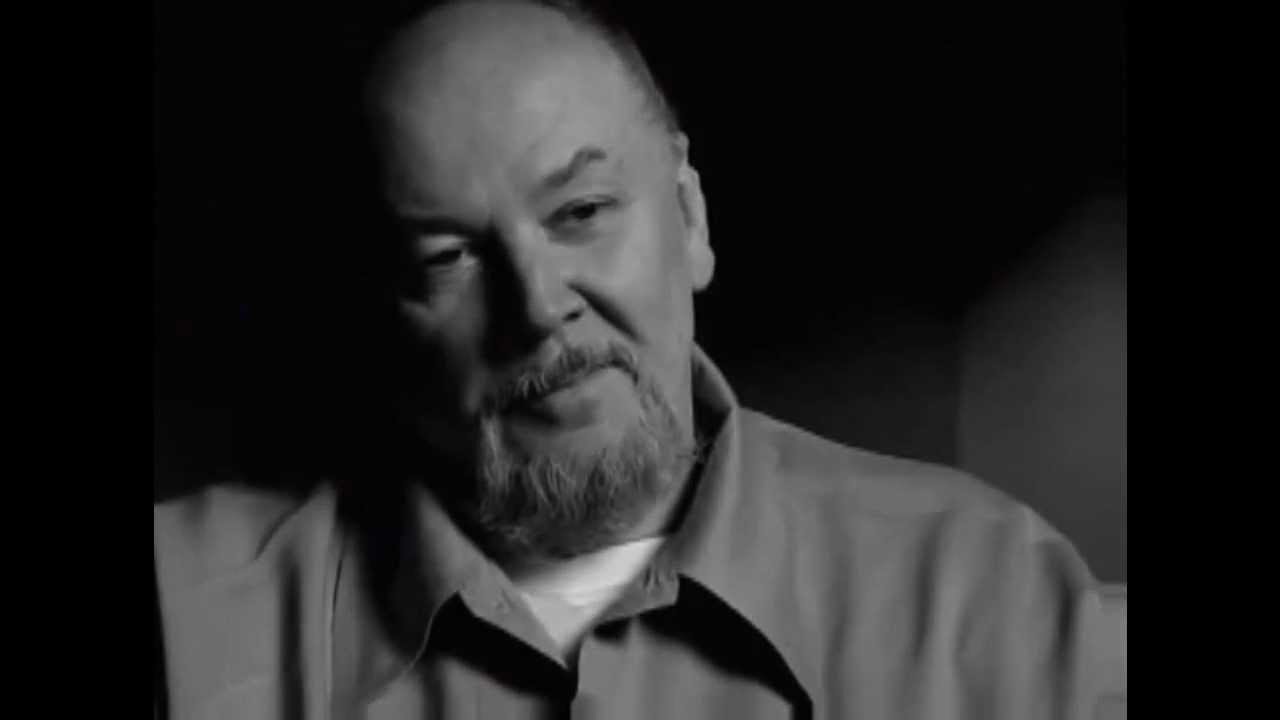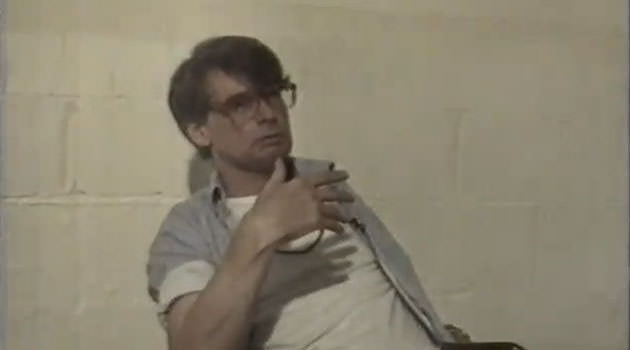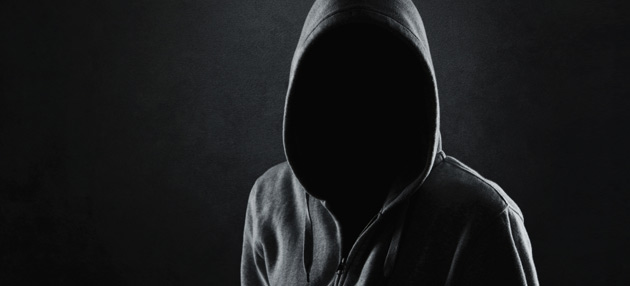The ‘Iceman’ killed and walked away, and it took the investigators a long time to even surmise that it could be a serial killer on the prowl because, unlike most serial killers, ‘Iceman’ did not have a preferred way of killing, or a preferred class of victims. He killed over 100, but was convicted of killing only 5.
It took very long for the law enforcement agencies to realize that they were not only dealing with crime-related, gang-supported killings commonly associated with organized crimes, but were also dealing with a serial killer. That was principally because, unlike most serial killers, this one did not have a preferred way of killing, or a preferred class of victims. And a great number of his victims were criminals. So, it appeared like the bad people were being killed by other bad people, who would also be killed by yet another bunch of bad people. That’s just the natural ‘career graph’ of the criminals. There is no retirement; just an unconventional, permanent ‘retired hurt’ status. Interestingly, the law enforcement did not suspect the involvement of a single killer in multiple killings at any point of time apparently because of the varied ways of killing as indicated above. So, they did not investigate on those lines. It was the disclosures made by the undercover police officers that brought Kuklinski to light. But it took long enough for the killer to claim over 100 victims.
 Richard Kuklinski was born on April 11, 1935 to Stanley Kuklinski, a Polish immigrant from Warsaw, who worked as a brakeman on the railroad, and Anna McNally in Jersey City, New Jersey. His mother was a daughter of Catholic Irish immigrants from Dublin and worked at a meat-packing plant during much of Richard’s childhood. Richard suffered constant abuse at the hands of both of his parents, particularly his father, who would beat him mercilessly for flimsy and sometimes no reason at all.
Richard Kuklinski was born on April 11, 1935 to Stanley Kuklinski, a Polish immigrant from Warsaw, who worked as a brakeman on the railroad, and Anna McNally in Jersey City, New Jersey. His mother was a daughter of Catholic Irish immigrants from Dublin and worked at a meat-packing plant during much of Richard’s childhood. Richard suffered constant abuse at the hands of both of his parents, particularly his father, who would beat him mercilessly for flimsy and sometimes no reason at all.
Kuklinski’s mother – an impoverished, Polish religious woman —thought that strict discipline and religion was the right way to raise the kids into responsible individuals. So, Kuklinski was raised as a Catholic with a generous dose of everyday beatings to instill discipline in him. His father did not spare his mother either, and his mother got regular beatings, too. So, Kuklinski was at the receiving end of double-dose at the hands of his parents. He had a sister, Roberta, and a younger brother, Joseph. His younger brother, Joseph Kuklinski (1944–2003), was found guilty of raping and killing a 12-year-old girl. When Kuklinski was asked about his brother’s criminal history, he pointed out that he and his brother came from the same father.
Kuklinski killed the first time when he was just 13. It was Charley Lane, who lead a small gang of teenagers called “The Project Boys”, and had been bullying Kuklinski for quite some time. So, in 1948, Kuklinski attacked Lane in an ambush and beat him to death. It was after Lane and his gang had given Kuklinski a particularly good beating once that Kuklinski decided to avenge the humiliation, and attacked Lane with a thick wooden dowel beating him to death though, as per his own admission, he did not intend to kill Lane. But Lane was dead before Kuklinski knew it. He cast Lane’s body off a bridge in South Jersey. He had broken his teeth and had chopped the finger tips to make it hard – if not impossible – for the police to identify the dead. However, the body was never discovered anyway. After killing Lane, Kuklinski went around looking for other boys of the gang and thrashed them all nearly to death with a metal pole taken from a trash can. Kuklinski said in a documentary titled ‘Ice Man: Confessions of a Mafia Hit Man ‘ aired on HBO in 1992 that after killing Lane he realized that it was “better to give than to receive”.
By the beginning of 1954, Kuklinski had started frequenting Hell’s Kitchen in Manhattan looking for victims. Killing was a sport for Kuklinski. He killed anybody who offended him even slightly, for he just needed the slightest reason to kill. But he always killed men and ‘never’ a woman, as asserted by him. He stabbed, shot and bludgeoned men to death, and left most of them on the spot of murder, but some got dumped into Hudson River nearby. Recalling this time Kukliski said:
By now you know what I liked most was the hunt, the challenge of what the thing was. The killing for me was secondary. I got no rise as such out of it…for the most part. But the figuring it out, the challenge—the stalking and doing it right, successfully—that excited me a lot. The greater the odds against me, the more juice I got out of it. 1
But the crime career of Kuklinski took off when he met Roy DeMeo, and through him got associated with the Gambino crime family. It so happened that Kuklinski owed money to a DeMeo crew member, and DeMeo was sent over to Kuklinski to “talk” him into submission, and in the process Kuklinski was beaten up and pistol-whipped by DeMeo, but despite having a pistol on him, Kuklinski refrained from using it despite his violent tendencies, which earned him DeMeo’s respect.
 After he paid back his debt, he was called upon by DeMeo to assist him in his criminal enterprises. Kuklinski was a natural at killing. During the time he was being tested, DeMeo took Kuklinski along with him and asked him to kill a random man walking his dog. Without an iota of hesitation, Kuklinski walked up to the man and shot him in the head. He asked no questions and did not flinch for even a fraction of a second. From then onwards, Kuklinski was DeMeo’s favourite man for certain kinds of jobs.
After he paid back his debt, he was called upon by DeMeo to assist him in his criminal enterprises. Kuklinski was a natural at killing. During the time he was being tested, DeMeo took Kuklinski along with him and asked him to kill a random man walking his dog. Without an iota of hesitation, Kuklinski walked up to the man and shot him in the head. He asked no questions and did not flinch for even a fraction of a second. From then onwards, Kuklinski was DeMeo’s favourite man for certain kinds of jobs.
Kuklinski killed by shooting, stabbing, strangling and sometimes even by brutal beating “for some exercise”, as he once put it. His mode of disposal of the bodies was equally varied. Apart from butchering the bodies to dispose and throwing them in the river, he also sometimes filled a large canister with inflammable oil, put the body in it and set it afire. On some occasions this large drum was buried together with the burnt body. Some of his victims also had their dead bodies stuffed in the boot of a car with the car sent to be crushed in the junkyard. The bodies were thus junked, and withered without a trace when the remains of the car got recycled. This was among Kuklinski’s favourite disposal methods for dead body.
His family never got a wind of what he did. His neighbours and the others he interacted with socially, found him a calm, family man and a successful businessman except that none of them knew as to what he exactly dealt in. His claim that he never killed a female or a child stands unchallenged by the evidences available against him. However, this does not mean he was incapable of hurting women though he might not have killed any woman. He never beat any of his children, but he did hurt his wife severely many times. But there was no reason for anybody around him to think that he could kill.
Kuklinski’s favourite method of killing was by cyanide, for it was quick and clean.
When the undercover policemen reported that there was a professional, serial killer on the prowl, they laid out a plan to nab Kuklinski, and one of the undercover policemen (Dominick Polifrone) posed as though he wanted Kuklinski to do a killing for him. Kuklinski was interested. On December 17, 1986 Kuklinski met Polifrone, who gave him fake cyanide for a planned murder. He went on his way to do the ‘job’. But before reaching the appointed place, he tested the chemical on a stray dog, and the dog survived. Obviously, the chemical was not cyanide. Therefore, something was seriously wrong with the picture. Kuklinski, instead of attempting to kill by any other means, chose to walk away from it and went home.
He was arrested two hours later. There was gun found in his car, and his wife was taken in for trying to block her husband’s arrest. However, the police had failed to nail him the way they had hoped to. So, when the investigators finally got hold of Kuklinski in1986, their entire case was mostly based on the testimony of undercover agent Dominick Polifrone, and the evidence that the New Jersey State Police detective Pat Kane had built over a period of six years. The investigation that led to the arrest of Kuklinski was a joint operation by the New Jersey Attorney General’s office and the Bureau of Alcohol, Tobacco and Firearms. The investigation was called “Operation Iceman”. Kuklinski was called the “Iceman” because on many occasions, before dumping the dead bodies, Kuklinski would put them in industrial freezer in order to disguise the time of death, which left the coroners either confused about the time of death or made them come up with a time that was inaccurate by several hours, if not days. This improved the chances for Kuklinski to come up with a genuine alibi.
However, on one of such occasions Kuklinski hurriedly dumped the body before allowing it to thaw properly. Perhaps, he thought that by the time the body would be found, all traces of refrigeration would have disappeared. Things didn’t go the way Kuklinski had expected, and the coroner found ice in the heart of the victim, which answered a few questions about the mode of the disposal of bodies by the killer. This earned Kuklinski the name ‘Iceman’, which is also the title of a movie made on his life.
Kuklinski was charged with five counts of murder, six weapons’ violations, an attempted murder, robbery and attempted robbery. Authorities also disclosed that Kuklinski was preparing for his retirement or for fleeing with large sums of money in his Swiss bank accounts, and a reservation on a flight to Switzerland.
Kuklinski was found guilty of five murders in all in March 1988, and was awarded consecutive life sentences for them. In 2003, he pleaded guilty for the murder of a New York City Police Detective, Peter Calabro, which added another 30 years to his incarceration, though the addition was meaningless, as he was anyway not entitled to parole until he was 110 years of age.
Originally written for and published in LAWYERS UPDATE as part of Crime File series in October 2013.





